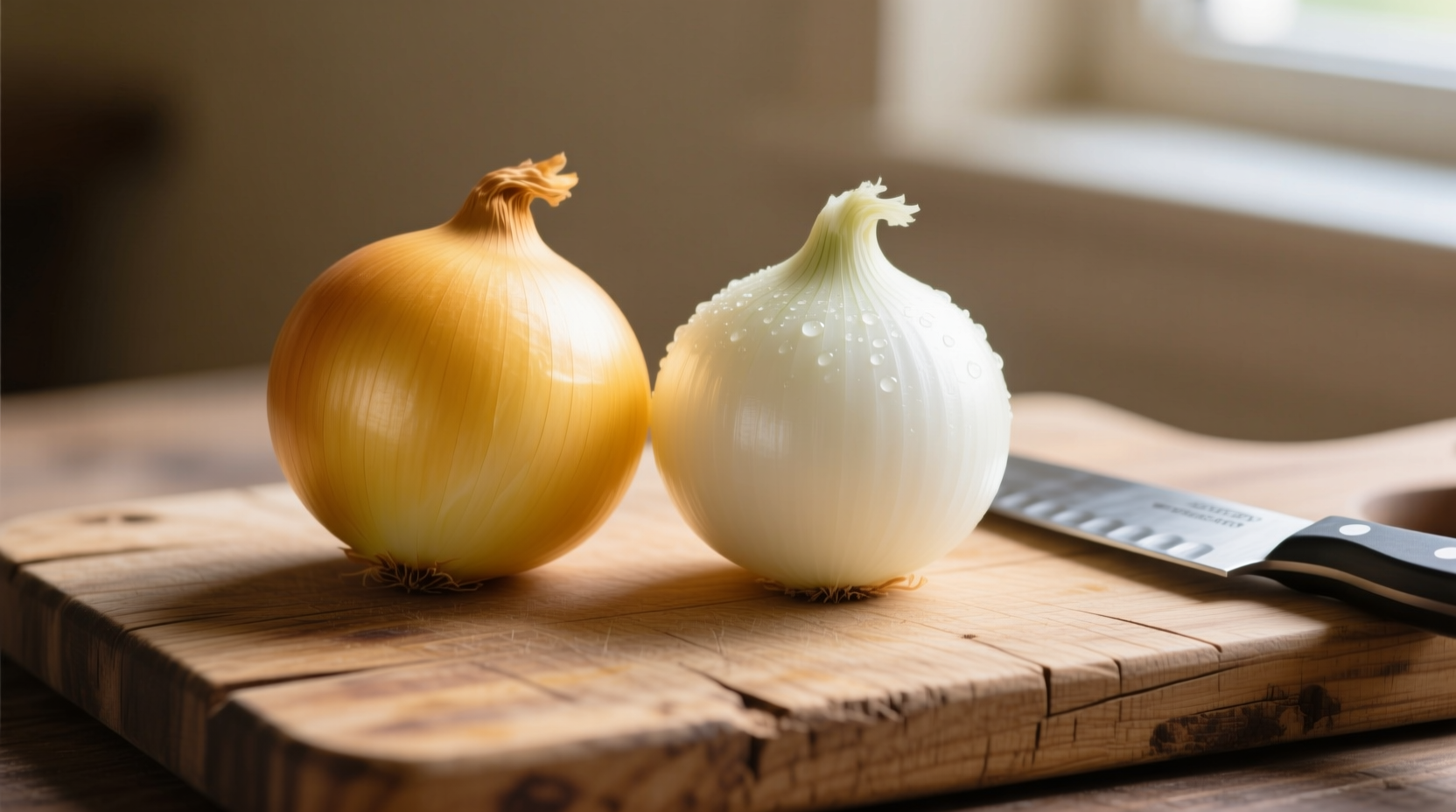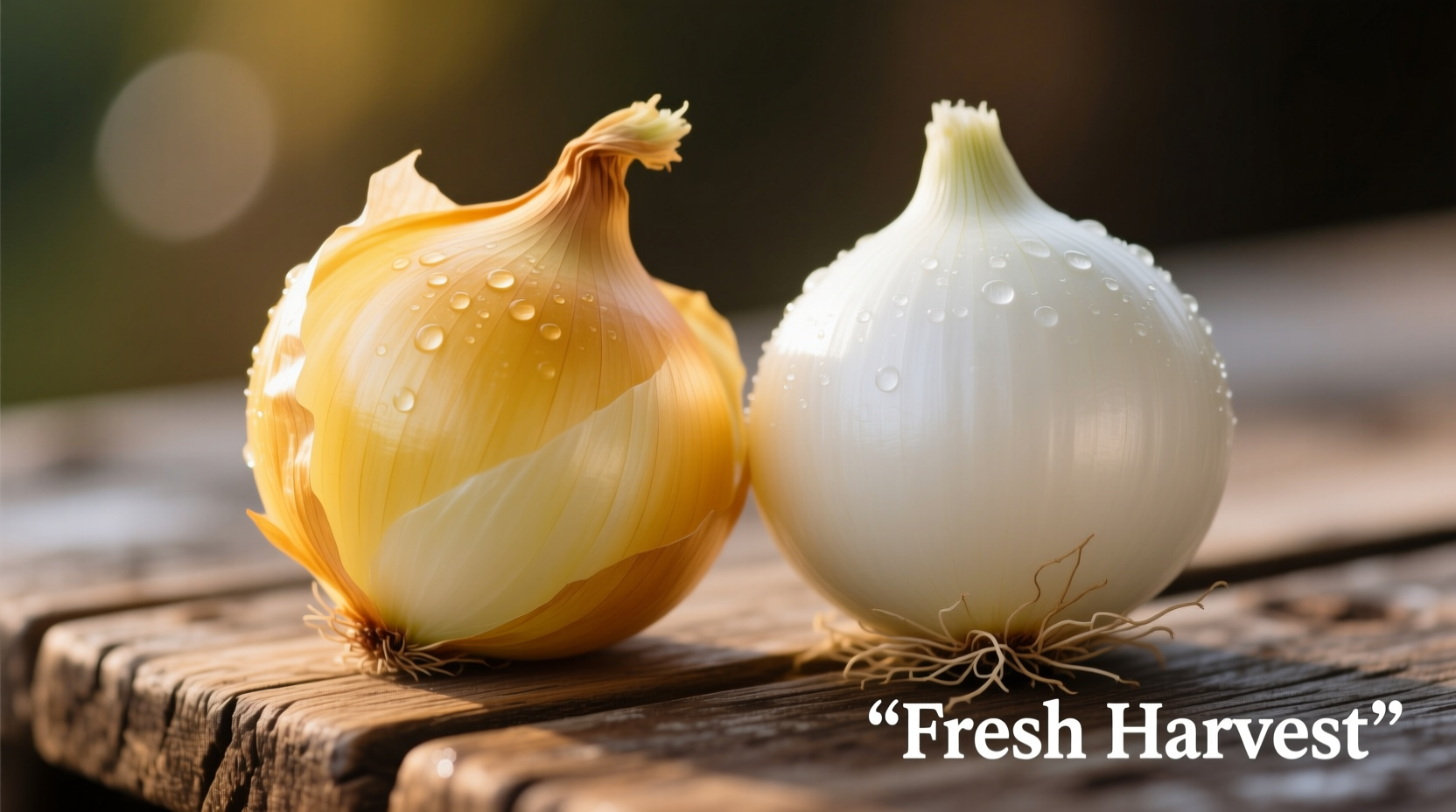Choose yellow onions for cooking and caramelizing due to their higher sugar content, while white onions work best raw in salsas and salads where their sharper flavor shines. Yellow onions last longer in storage (2-3 months) compared to white onions (2-4 weeks).
Decoding Onion Varieties: Your Practical Guide to Yellow vs White Onions
Ever stood frozen in the grocery aisle wondering whether yellow or white onions would make your dish truly shine? You're not alone. This simple choice impacts flavor, texture, and even shelf life of your creations. Let's cut through the confusion with science-backed guidance that transforms how you approach everyday cooking.
Why Onion Selection Matters More Than You Think
Onions form the flavor foundation of countless dishes worldwide, yet most home cooks treat all varieties interchangeably. The reality? Yellow and white onions possess distinct chemical compositions that react differently to heat, acidity, and time. Understanding these differences unlocks consistent results whether you're making French onion soup or fresh pico de gallo.
| Characteristic | Yellow Onions | White Onions |
|---|---|---|
| Flavor Profile | Sweet with moderate pungency (7-9% sugar) | Sharp, clean bite with higher sulfur compounds |
| Best Cooking Method | Caramelizing, roasting, braising | Raw applications, quick sautés |
| Storage Life | 2-3 months in cool, dark place | 2-4 weeks (more perishable) |
| Peel Texture | Thicker, papery brown skin | Thinner, pure white skin |
| Common Culinary Uses | French onion soup, stews, roasted vegetables | Mexican salsas, ceviche, potato salad |
When to Reach for Yellow Onions
Yellow onions dominate supermarket shelves for good reason—they're culinary workhorses. Their higher sugar content (7-9% compared to white onions' 4-6%) creates superior caramelization. When heat breaks down these sugars through the Maillard reaction, you get that rich, complex sweetness essential for dishes like French onion soup or mirepoix.
Professional chefs consistently choose yellow onions for long-cooking applications because their flavor mellows beautifully while maintaining structural integrity. According to research from the USDA FoodData Central, yellow onions contain more quercetin—a flavonoid that stabilizes during cooking—making them nutritionally advantageous for cooked dishes.
White Onion Applications: Where They Shine
White onions deliver a brighter, cleaner bite that holds up remarkably well in acidic environments. This makes them indispensable for fresh applications where you want onion flavor without overwhelming sweetness. In Mexican cuisine, white onions are non-negotiable for authentic pico de gallo and guacamole—their sharper profile cuts through rich avocado perfectly.
Food science explains why: white onions contain higher concentrations of syn-propanethial-S-oxide, the compound responsible for that characteristic sharpness. When used raw, this creates the vibrant "onion kick" that disappears in yellow varieties. For ceviche or fresh salads, white onions maintain their distinct presence where yellow onions would become muddy.

Flavor Evolution During Cooking: A Critical Timeline
Understanding how onion flavors transform during cooking separates good cooks from great ones. This timeline reveals why variety selection matters at each stage:
- 0-5 minutes (Raw): White onions dominate with crisp texture and pronounced bite—ideal for fresh salsas
- 5-15 minutes (Sautéing): Yellow onions begin sweetening while white onions mellow slightly—both work here
- 15-30 minutes (Caramelizing): Yellow onions develop complex sweetness; white onions turn one-dimensionally sharp
- 30+ minutes (Braising): Yellow onions integrate seamlessly; white onions may impart bitter notes
This progression explains why professional kitchens maintain both varieties. As documented in Harold McGee's On Food and Cooking, the sulfur compounds in white onions break down differently under prolonged heat, sometimes creating unpleasant bitter compounds that yellow onions avoid.
Practical Substitution Guide
Running out of your preferred variety? These substitution guidelines prevent recipe disasters:
- Yellow for white: Use in cooked dishes only—never raw applications. Reduce quantity by 25% to avoid excessive sweetness
- White for yellow: Works in quick sautés but avoid for caramelizing. Add pinch of sugar to compensate for lower sugar content
- Emergency swap: Soak white onions in ice water for 10 minutes to mellow sharpness when substituting for yellow in raw dishes
Storage Secrets That Extend Freshness
Proper storage dramatically impacts onion performance. Yellow onions' thicker skin and lower water content give them superior shelf life. The National Center for Home Food Preservation confirms yellow onions maintain quality for 2-3 months in cool, dark conditions versus white onions' 2-4 week window.
Never refrigerate whole onions—this promotes mold. Instead, store in mesh bags in a pantry with good air circulation. For cut onions, refrigerate in airtight containers: yellow onion pieces last 7-10 days while white onion pieces deteriorate faster (4-7 days) due to higher moisture content.
Professional Chef's Pro Tips
Implement these techniques to maximize onion potential:
- Layered flavor building: Start with white onions for initial sharpness, then add yellow onions for sweetness in long-cooked dishes
- Texture control: For consistent dice, chill onions for 30 minutes before cutting—reduces tearing and maintains shape
- Bitterness prevention: When caramelizing, add 1/4 teaspoon baking soda per pound of onions to accelerate browning without burning
- Flavor preservation: Never cook onions in aluminum pans—metallic reactions create off-flavors, especially noticeable in white onions
Common Questions Answered
Let's address frequent concerns that impact your cooking results:











 浙公网安备
33010002000092号
浙公网安备
33010002000092号 浙B2-20120091-4
浙B2-20120091-4